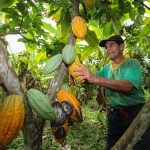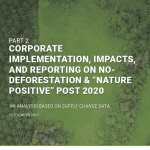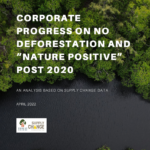Forest Trends’ Supply Change Initiative runs a comprehensive database on company commitments to reducing deforestation related to agricultural commodities.
Commercial agriculture drives as much as two-thirds of tropical deforestation globally, and most of the forest clearance and impacts stems from the production of the “big four” commodities: palm, soy, timber & pulp, and cattle. A growing number of businesses are determined to change course and are making commitments to reducing deforestation in supply chains. However, public information on how these commitments translate into action on the ground is scarce. Forest Trends’ Supply Change initiative fills this gap by closely tracking companies’ progress towards these commitments.
Supply Change’s collaborators are CDP and WWF. WWF brings to the table decades of support to companies making the transition to deforestation-free commodities, and CDP adds an ever-strengthening track record of motivating companies to disclose their impacts on the environment and take action to reduce them. Supply Change combines these assets with Forest Trends’ long-standing technical expertise in tracking and analyzing environmental markets to make for a robust analysis of these corporate commitments.
As of mid-2017, Supply Change is tracking more than 700 companies that have business practices linked to the “big four” commodities; they produce, process, trade, manufacture, or retail products linked to the “big four” commodities. In addition to tracking these companies’ public commitments to reducing deforestation in their supply chains, Supply Change also researches policies and practices that support their commitments and strengthen the sustainability of their supply chains. These include policies related to commodity certification, traceability, transparency, supporting smallholders, protecting biodiversity and wildlife, improving water management, and increasing yields per hectare, among others. See here for the complete list.
Supply Change is an evolving initiative, uniquely designed for partnership and collaboration to ensure it meets the ever-developing needs and interests of its stakeholder network of businesses, non-profits, governments, financial institutions, academic researchers, and the media.




